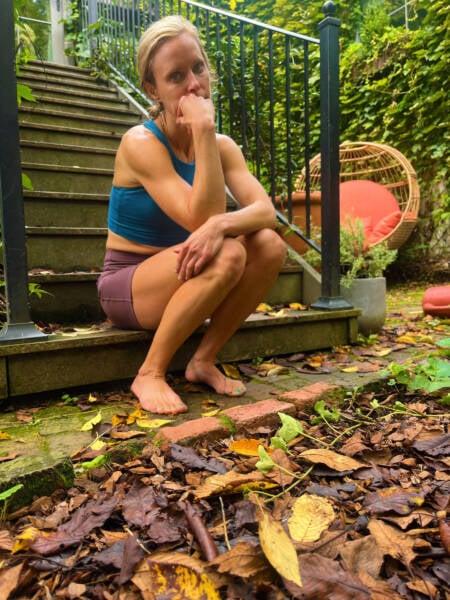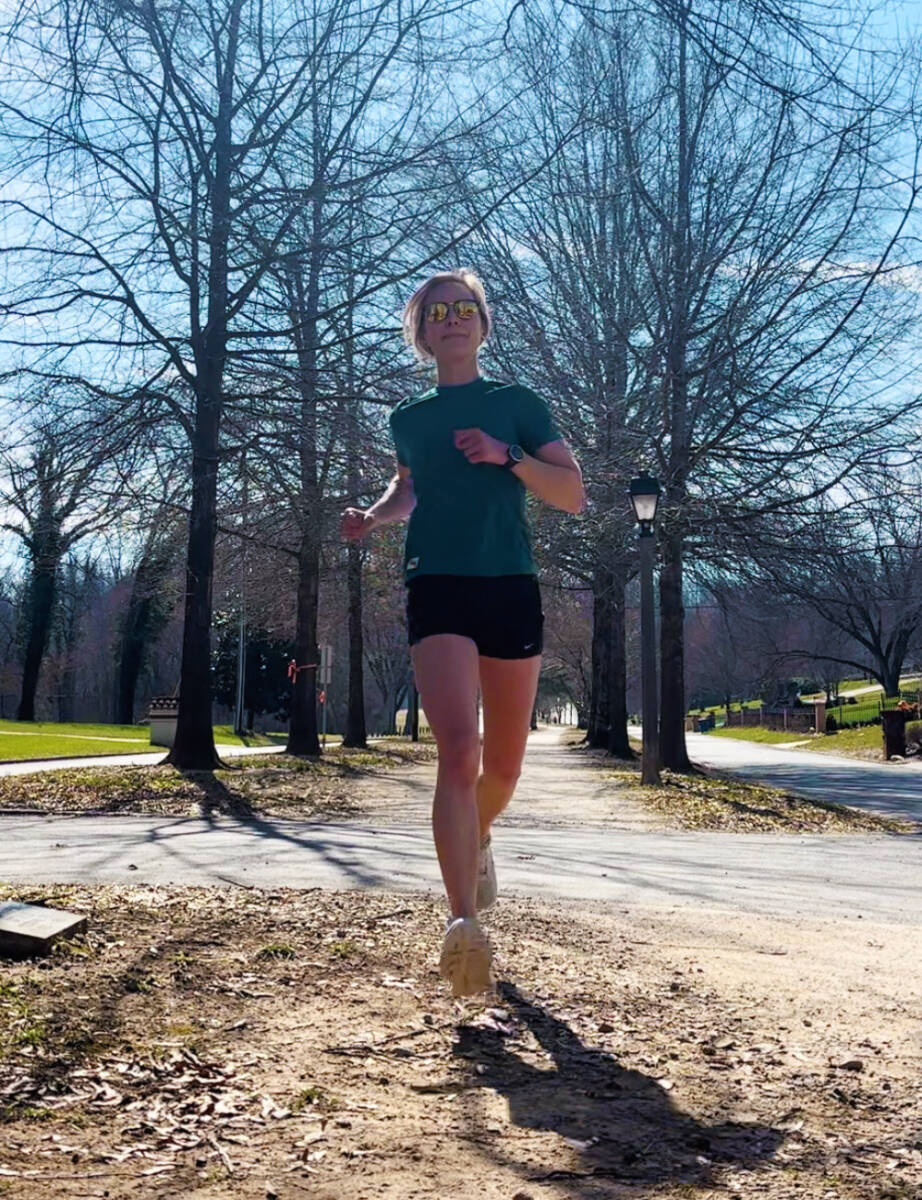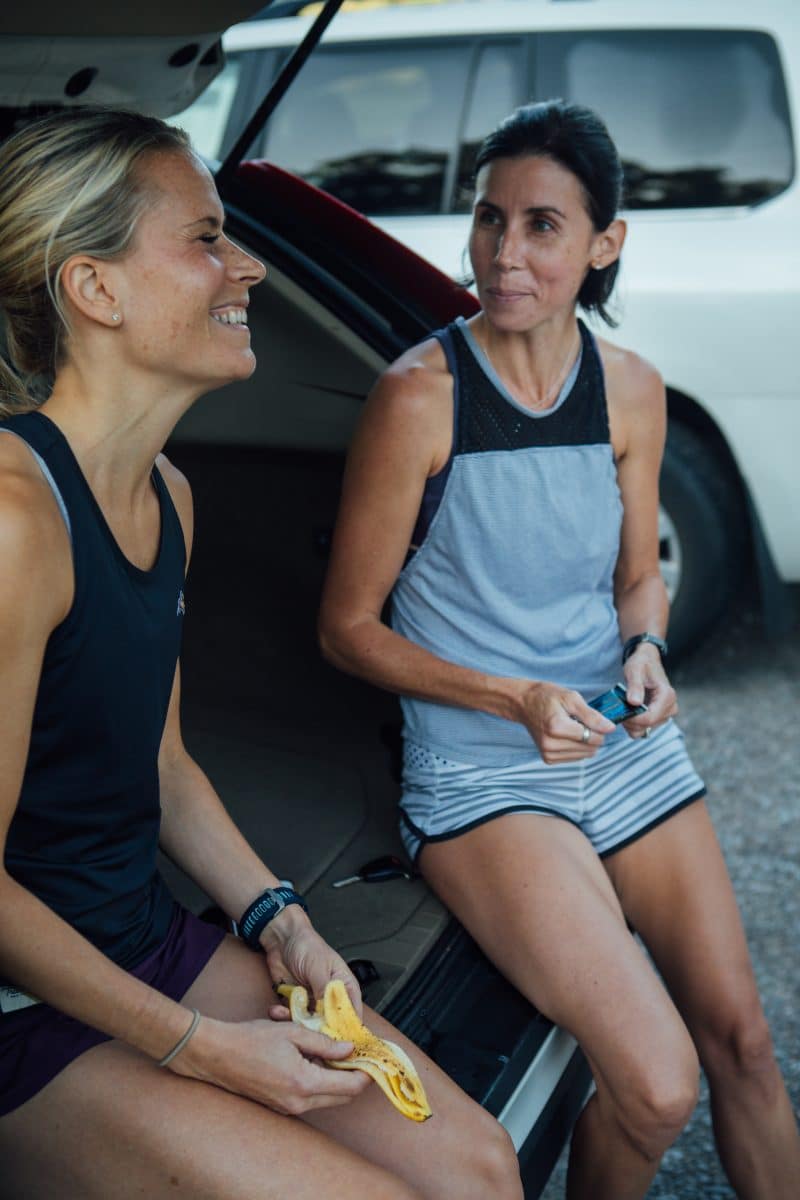9 Steps to Return to Running After Injury
I have had to return to running several times in the past few years due to running injuries. The key to returning without injury is taking it slow, adding one variable at a time, and slowly increasing volume. I detail how to return to running below.

The return to run after injury process can be incredibly frustrating and discouraging. The most common mistake injured runners make is jumping back in too quickly with a rapid increase in volume. We think we are where we left off, want to prove our fitness, or are just too excited to be running again.
The process is easier to manage if you are patient and expect setbacks and detours. Some of these are unavoidable and some have arisen in large part to being in a hurry to get back to your former self. However, if you truly want to return to running quickly, you need to listen to your body over your mind.
When in doubt, take extra time to rest and make healing your priority–not miles or pace.
Table of contents
To help you on your return to running after injury, return to running after a break, or a return to running postpartum, I am sharing 9 tips that will help you get there safely. I have learned these tips after returning to running postpartum, after three major running injuries (hamstring tear, plantar fascia tear, and labral tear), and illness. Let’s go!
9 Tips to Start Running After a Break
As mentioned, I’ve become an expert in how to get back into running because I have lived it many times (unfortunately) and have coached my athletes through it. The below return to running program is for runners who have taken an extended period off of more than six weeks.
(If you have taken a short time off running like a week to treat a potential injury, start with a test run of about 30 minutes.)
Have patience.
First thing’s first, you need to have patience with this process.
Patience is the bedrock of all running, especially when coming back after having running injury (or baby), or anything else. Take your time. Let your body adapt. Don’t rush progress. If you run, it will come. I promise. Being patient is perhaps the hardest part about being injured. But letting go of where you were and where you want to go can help you focus on where you are currently.
Several times throughout my recovery I would get stuck on a number of miles I should be running or pace and it only led to a step back. Be in the moment. It’s a good life lesson for everything.
Start with walking.
Most return-to-run programs should start with walking. Walking is the best cross-training exercise to prepare the body for running. It’s similar biomechanically and provides similar stress on the musculoskeletal system. It doesn’t provide the same aerobic development as say the stationary bike or elliptical, but it gets the muscles, joints, and soft tissues prepped for the impact.
Here’s how to use walking as part of your return process:
- Walk for 30 minutes comfortably.
- Once you have done that, introduce short run intervals. For example, run for 2 minutes, walk for 2 minutes 5 times.
- Do those intervals two times on nonconsecutive days before progressing.
- If you feel good, add the 6th interval or run for a bit longer, and walk for a shorter amount of time.
- Once you are up to 30 minutes of continuous running, you can segue to only running.
- On the days you do not run, strengthen your aerobic system with cross-training such as the bike or elliptical.
A running coach or knowledgeable physical therapist can guide you in your specific return to running.
If you have access to an Alter-G anti-gravity treadmill, you can also use that and gradually decrease the off-loaded weight. Once you are able to handle two sessions of continuous running at full body weight, you can segue to run/walks on the ground.
You can find an Alter-G near you here.
Increase running volume slowly.
Your body needs to be your guide when returning to running. Thus, do not get numbers stuck in your head of how far you should run each week. This is an incremental return to your normal training volume with your body calling the shots.
- Do a run/walk, and hold it for two sessions before increasing.
- Do not run on consecutive days.
- Do not increase volume by more than 10 percent week over week or 30 percent every three weeks.
- Truly pay attention to how your body feels and know its current limits (or threshold).
- Does your injury flare up after 4-mile runs? Cap it at 3 miles for a week before progressing.
- Do you need an extra day off during the week to aid in recovery? Take it.
- Take walk breaks as needed to give the body a break.
- Cutting corners to get to the start faster will only put you back on the sidelines.
Let pain be your guide.
If you’re returning to running after injury, you need to be very aware of your pain level before, during and the next day after you run.
- If your pain intensifies as you run, stop. You’ve surpassed your current running threshold. Stay within your boundaries for a few days before trying to run longer again.
- If your pain flares past a level 3 in the 48 hours after your run, again back off as needed.
- Take extra rest days if you feel like need them!
Increase frequency over duration.
You will spur more physiological changes the more sessions you run. So once you’re able to run consistently, add another day running before elongating your runs past 40-30 minutes.
- Aim to run 3 to 5 runs for 30 to 40 minutes.
- Then, add a 6th day of running before elongating one of those runs past 40 minutes.
Add a variable at a time.
Start on flat surfaces like a track. Keep the runs super slow. Don’t add speed, distance, or different terrain until you’ve mastered where you’re at for 2-4 consecutive runs without pain.
This is kind of like when you start your baby on solids: start with avocado. Stick with it for a few days to make sure your babe is doing okay before introducing bananas…You remember the drill. That same philosophy is good for your return to running. Just like feeding your baby, keep it simple.
Once you are consistently running pain-free, you can add speed first in the form of gentle hill strides and then flat strides. Do this before attempting any speed workouts or tempos
Alternate run and rest days.
As mentioned, do not run consecutive days until you are comfortably running for 30 minutes every other day for several weeks.
In my current return to run plan, it took me three months to work up to adding a fifth day of running. Alternating the days you run with the days you cross-training is crucial for allowing your body (and injury) to adjust to the impact of running!
Don’t freak out.
When you get back into running, it can produce a lot of anxiety. First, you feel completely out of shape, so it is hard. Second, you worry any pain you feel in your injury is a big step back. Third, as your body adjusts to the new stress, you feel new aches and pains and worry that it’s a new injury.
This is all normal and it’s important to listen to your body but also remember that a little bit of pain is your body readjusting and strengthening. As long as it is not past a level 3 and last for more than two days, you’re good to keep progressing.
What do you do if your injury flares up? If your pain goes past a level 3 or lasts for more than two days, back off, treat it, and/or call your physical therapist.
Expect to not have a straight line, forward progression with your return to run program. You will need to take a step back or extra rest days along the way. You may even have a new injury try to crop up (I did). Just keep being diligent and patient.
Keep seeing your physical therapist.
Along the way, keep seeing your physical therapist to keep an eye on your injury if that’s why you took a break, or to ward off new ones.
Also, keep up all your prehab and rehab exercises!! This is not the time to slack! Keeping up your strength is a good tool for injury prevention so you don’t get sidelined again!
If you want help returning to running, you can learn more about my run coaching here. Have you been able to return to running successfully?







I’m coming back from injury right now and I can relate to all your good points.
I like the 10% rule. I have just been increasing my mileage by feel, but to have a strict rule really makes sense.
Today I’m doing my first short speed unit – a one mile run at best effort. I’ve been running for over a month now, so it feels comfortable.
Thank you for the article. Im coming back after overuse injury. Is it better to do a short jog and keep increasing or walk/run method?
Thank you so much for reading this. It is better to start with a walk then run/walk gradually increasing your run and decreasing your walk time—ensuring rest days & several days at the same distance before increasing. Good luck with your recovery & reach out any time with questions!
Catrina,
I am glad you are on the mend! Running by feel is truly the best thing you can do. Let me know how the mile goes! Good luck!
Whitney
i have an A bony thorn injured in my foot so much pain and i want to run but i can’t so how long it will take should i stop completely until heeling ?
Ouch! Unfortunately I am not the right person to answer that. I’d seek a medical pro’s opinion but if it still hurts, definitely don’t run!
Unfortunately it is impossible to predict a timeline and dangerous. I advise waiting until painfree, then wait longer, then proceed with walking then run/walk
Thanks so much for this article. Common sense advice that makes me feel much better in my return to running after an injury. Like I now have permission to walk during runs and the frequency of walking, as well as running every other day.
Thank you for reading, Ann’s! I’m glad you found it helpful. I truly believe walking is the best cross training you can do to prepare the body for running!
Omg – Thank you for this. I have/had plantar fasciitis on and off for four months! I was never a competitive runner, but there was nothing like my morning run to start my day. I had to quit running for 3 months. I did it poorly, without any constraining. I JUST got back from my first run so disappointed in myself. This article has made me feel better and helped me come up with my game plan. THANK YOU!!!
Katherine, I am so glad you are back & feeling better! PF is the worst! Good luck with your recovery & reach out with any questions!
I just got back into running after having a thigh strain. I rested for about 6 weeks and had a few set backs the few times I started to run before my body was ready. I started with 2 miles and was increasing 10% each run twice a week but I would have good days with zero irritation and days with some irritation that went away after 24 hours or less and others like today where the irritation has lasted for a few days. (Irritation in inner thigh, NOT where the thigh strain was) I’m thinking about scrapping my original plan and really starting from the beginning. It feels right to do but at the same time I’m worried because it would have me doing only a few minutes of running combined with walking and starting at only 10 minutes total of running for the first level. The last level does end with 20 minutes running 1 min walking 3x. The goal is to do each level twice with no pain symptoms before progressing. Does this sound TOO easy to start? Or do would starting from ground zero be the best way to progress?
Hi Haleigh,
I am sorry to hear about your injury! But glad you are on the mend. I think you are right to trust your body. Do you have access to an alter G treadmill? If so, you can expand the time you run while off loading bodyweight. Many PT offices will have them. The running is like a strength exercise so doing a bit each time before progressing plus another XT activity will continue to move both your musculoskeletal and cardiovascular fitness forward
Thanks for sharing this i have been out of active sport for 6 years had an injury but did operation and everything went well but i lost my passion for football due to i lost my dad just trying to restart all over again discovered i lost my running steps ,i dont even know how to walk properly not to talk of running whenever i try to run i am constantly stopping without my wish and not running well pls help me kindly give me some exercise tip to enable run back again this is my email
Lausecan724@gmail.com